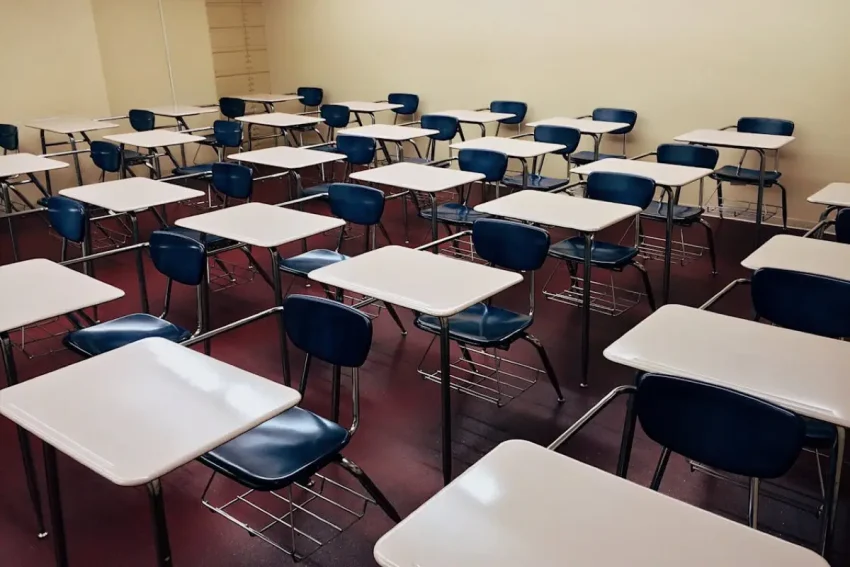Why Durable Furniture is a Smart Investment for Educational Institutions

Educational institutions face unique challenges when it comes to choosing furniture that meets the needs of students, staff, and the overall environment. The right furniture not only contributes to a functional atmosphere but also enhances the learning experience.
Investing in durable furniture is essential for schools, colleges, and universities, as it ensures longevity, maintains aesthetic appeal, and ultimately proves to be a budget-friendly choice.
Contents
Quality Over Quantity
The furniture found within educational settings experiences heavy use due to a constant influx of students and staff. Instead of frequently replacing worn-out items, institutions should prioritize investing in high-quality, durable pieces. Selecting furniture made from robust materials that can withstand active environments reduces the need for ongoing repairs or replacements. Steel, hardwood, and high-quality plastics provide longevity that standard materials cannot match.
Choosing durable furniture often means a more straightforward maintenance process. Many resilient materials resist stains and scratches, making cleaning a breeze. The time saved on maintenance can then be redirected towards more essential tasks, such as enhancing educational programs and student activities.
Outdoor Areas
Outdoor spaces around educational institutions serve as extensions of the classroom, providing unique opportunities for learning beyond traditional walls. Outdoor furniture, like picnic tables, benches, and chairs, enhances these areas by creating inviting spaces for social interaction and engagement. When considering outdoor furniture options, materials that resist the elements are crucial.
Stainless steel and weather-resistant wood are popular choices, ensuring longevity against sun, rain, and snow. Talking to experts in outdoor picnic tables can make your choices clearer, helping you select the right style and material for outdoor spaces. Outdoor furniture can spark creativity and initiative in students, allowing for learning in different settings.
Organizing classes or study groups outside often rejuvenates student enthusiasm while encouraging team-building activities. Embracing this multifunctional approach promotes an engaging atmosphere while maximizing institutional resources.
Promoting Learning Through Design
Furniture design plays a significant role in creating an environment conducive to learning. Traditional chairs and desks can restrict movement and inhibit engagement, while innovative furniture designs encourage collaboration and interaction. Flexible seating arrangements help accommodate different teaching styles, making classrooms adaptable to the needs of educators and learners alike.
Incorporating well-designed furniture can positively affect student concentration and focus. Comfortable seating encourages students to remain attentive and engaged, as fatigue and discomfort often lead to distractions. Therefore, selecting appropriately designed, durable furniture proves beneficial for overall academic performance.
Modern furniture designs often consider inclusivity, allowing for better accessibility and comfort for all students. Thoughtfully designed layouts can also improve classroom flow and reduce disruptive transitions between activities. As learning environments evolve, furniture must support both traditional and tech-integrated teaching methods.
Investment in Student Well-Being
More than just material durability, furniture can influence student well-being and attitudes toward learning. Ergonomic designs reduce strain and fatigue, which fosters a better learning environment. Outfitting classrooms with appropriately designed, comfortable furniture encourages longer periods of focus.
Durable furniture can also play a role in reducing behavioral issues associated with discomfort. Students who feel physically secure and supported are less likely to exhibit restlessness. An environment that prioritizes such considerations can lead to fewer discipline issues, enhancing the overall educational atmosphere.
Environmental Considerations
Another critical aspect of choosing durable furniture relates to environmental impact. Furniture made from sustainable materials reduces waste and conserves resources, aligning educational institutions with eco-friendly practices. By selecting products designed to last, institutions actively contribute to lowering their carbon footprint.
Durable furniture often comes from companies that value sustainable manufacturing processes. Prioritizing businesses that utilize environmentally responsible practices can create a positive ripple effect, encouraging industry-wide changes.
Incorporating eco-friendly criteria into procurement policies reinforces a school’s commitment to sustainability. This approach not only benefits the environment but also sets an example for students about responsible consumption. Over time, these efforts help build a culture of sustainability within the institution.
Cost-Effectiveness in the Long Run
Investing in durable furniture may initially require a higher capital outlay, but it proves to be cost-effective over time. Frequent replacements significantly impact budgeting, leading to higher administrative costs. On the other hand, selecting quality pieces ensures that financial resources are allocated to other critical areas.
Financial considerations should encompass not only direct expenses but also long-term gains. Reduced maintenance costs, the availability of warranties, and the longevity of furniture ultimately lead to savings. Allocating funds towards durable options can free up resources for enriching educational programs, technological upgrades, and facility improvements.
Reliable furniture reduces disruptions caused by frequent repairs or replacements. This consistency supports smoother daily operations and a more comfortable environment for students and staff. In the long run, fewer replacements also contribute to sustainability goals by minimizing waste.
Investing in durable furniture for educational institutions yields significant advantages, ranging from enhanced student experiences to financial savings. The longevity and resilience of well-designed furniture meet the varied demands of dynamic learning environments. By choosing the right pieces, educational institutions can create settings that promote engagement, creativity, and growth.



